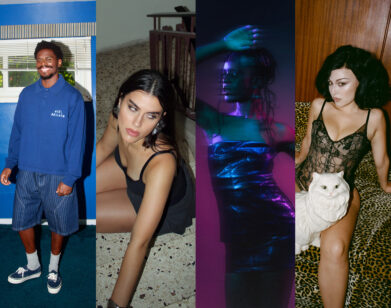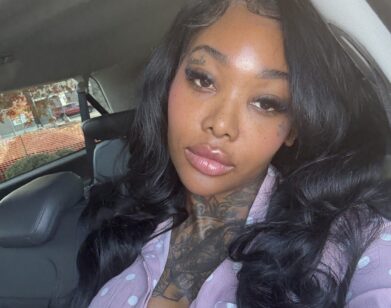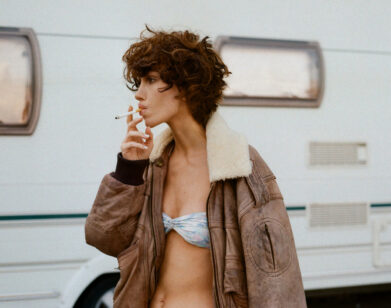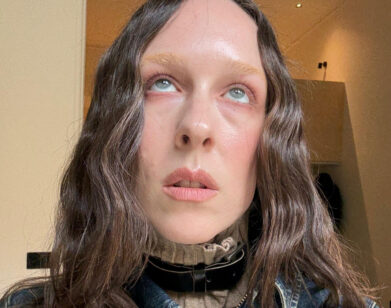Photographer Ruby Ray Takes Us on a Safari Through the Salad Days of California Punk
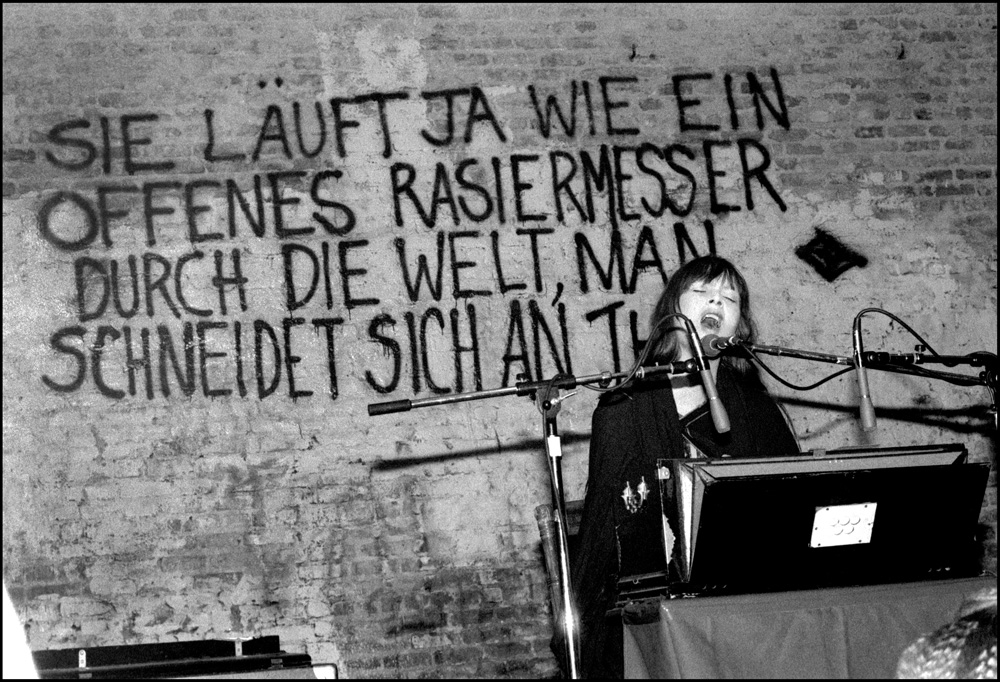
Nico at the Mabuhay Gardens, 1979 with her epithet “She runs through the world like an open razor blade, watch out or you might get cut.”
It was the best of times. It was the loudest, angriest, and most “god awful” of times. It was California in the late 1970s, the pinnacle of punk, and photographer Ruby Ray was there, fortunately, to capture the period in all its leather-clad, expletive-littered subversion. The San Francisco implant traversed the West Coast world of punk, capturing its musical heroes — Nico, the Cramps, DEVO, X’s storied frontwoman Exene — with candid results that continue to shape our perception of its origins to this day. She first got her start photographing for the zine Search and Destroy, an underground catalogue of all things punk in San Francisco (the NorCal analog of LA’s Slash), while working at Tower Records, where she ran into its editor, V. “Valhalla” Vale. The magazine, which was sold at City Lights Bookstore in North Beach, was funded by $100 donations from its beatnik denizens, Lawrence Ferlinghetti and Allen Ginsberg. Upon seeing the magazine, Ray told Vale that it needed more photographs; and so began her career documenting dark clubs, blurry skylines, and defiant scowls. Vale quit Search and Destroy in 1979 and launched his own magazine, RE/Search, which helped introduce the world to artists like J.G. Ballard and William Burroughs — who Ray famously photographed with a three-piece suit and a pistol in his backyard.
Ray’s earliest photographs have now been collected by the imprint Trapart Books in Kalifornia Kool – Photographs 1976-1982. It’s a time capsule into an era when fun could be weaponized against an establishment that was giving out poison Kool-Aid and instituting “no dancing” rules in clubs. (Here’s looking at you, Dianne Feinstein.) “Hardcore really is more California, it didn’t really happen in New York,” Ray told Interview as she reflected on the stories behind her effervescent black-and-whites. “It was different what was going on there.”
There is a buoyancy to Ray’s work, and to the scene from which it sprung, that feels at once contrarian and wholly earnest; a Cramps show at the Napa State Mental Hospital, which is, thankfully, immortalized on video, encapsulated the strain of empathy that pulsed from a movement of misfits. “It was a nice kind of insular society,” Ray said. “Nobody paid any attention to us, especially up in San Francisco. If any punks were walking down the street, people would yell things at them from their car. Because nobody wanted to put out any records or wanted to write about anything we did. We just did it all ourselves. And it turned out to be much better. No censorship. Just so much more fun.” Below, Ray takes us on a safari through the salad days of California punk — from Mark Mothersbaugh’s masked alter-ego to that head-banging show at a mental hospital.
———
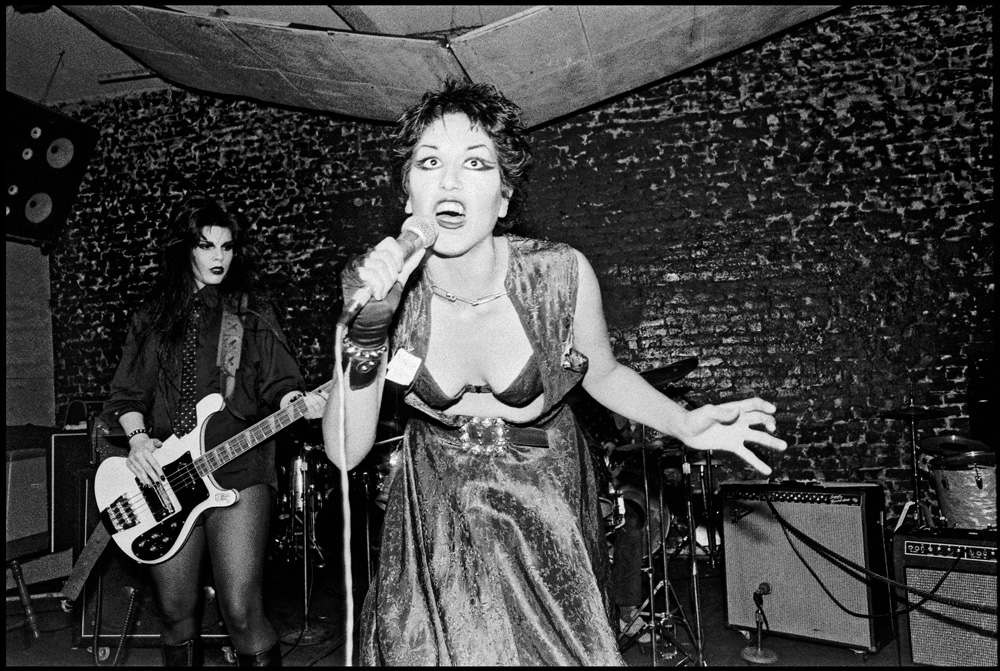
The Bags, 1978.
“That is Alice Bag and behind her is Pat Bag. They were a band called The Bags. Alice now is on the subway and on the bus stops, in the ads for the Punk Lust exhibit at the Museum of Sex. I was standing right in front of her. At that time I didn’t walk around holding my camera super obviously — I held it down, just kind of waiting for the right moment, and then I would just lift up my camera real quick and take a picture. I usually had the F-stop and the time already preset, so in a way it was almost like combat photography, just in the sense of being aware of and trying to capture the moment. The Bags were one of the punk bands from Los Angeles. That picture was taken in San Francisco. There was a lot of collaboration and cross currents between San Francisco and Los Angeles at the time, so that was one of their first shows up at the Mabuhay. The Mabuhay was the main punk club at that time in San Francisco. Later on, more clubs opened up because it was so vibrant of a scene. Alice is still singing and doing shows, not as The Bags, but still with a feminist punk sound. Pat Bag later played with The Damned.”
———
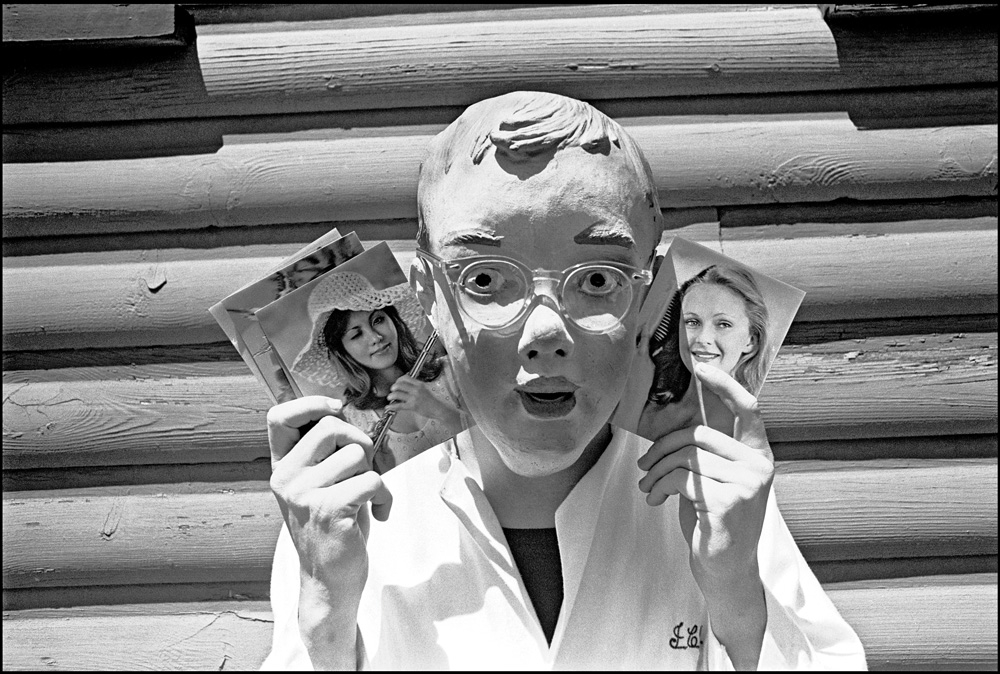
Mark Mothersbaugh as Booji Boy, 1977.
“This was Mark Mothersbaugh’s alter ego, in a way. We were down by the Fisherman’s Wharf in San Francisco trying to take a few photos, and he pulled those cards out of a rack somewhere and just put them by his head. DEVO originally came from the East coast of Ohio. They decided to come to San Francisco in 1977 because they liked the punk scene going on there. They started doing a lot of shows at the Mabuhay. Once they went to LA, they made it big and just took off. But they blew everyone’s mind when they first came to San Francisco because they were so wild. They had this whole theory about de-evolution: We’re not evolving, we’re devolving, we’re going backwards. That was what their music was about, the de-evolution. DEVO is the man that’s devolving.”
———
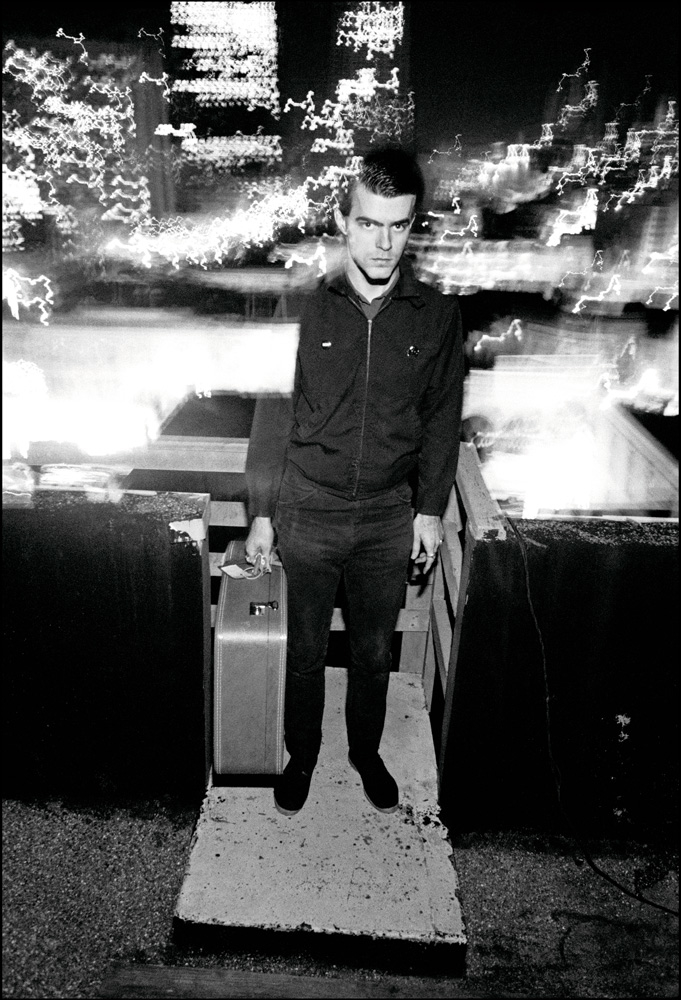
Boyd Rice, 1980.
“I call this photo “Civilization’s Noise in a Suitcase.” In that suitcase was all he used for his quote unquote music, which consisted of ear-piercing noise or repetitive scraping sounds — awkward and unpleasant industrial sounds with no real instruments. The photo was taken on the roof of my apartment building in San Francisco. You can see he’s coming up the stairs. I turned that into my so-called studio, and I photographed quite a few people up there. I utilized the city background as kind of a wavering light that would hover around the figures.”
———
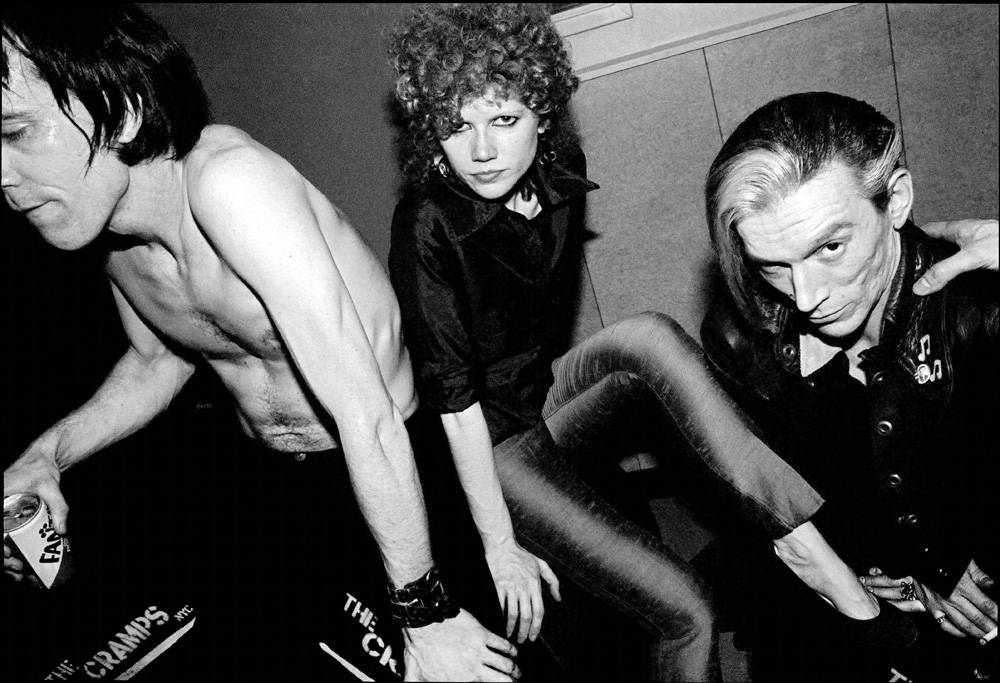
The Cramps in the rec room at Napa State Mental Hospital, 1979.
“This shot of The Cramps was taken at the Napa State Mental Hospital. Somebody arranged for The Cramps and another San Francisco band called The Mutants to play for the inmates there. That was about two hours north of San Francisco, so it wasn’t like everybody in the city went up there — just a small group of maybe 20 punks from the city went up to Napa for the show. The punks wanted to try to do shows in different weird places. It was a little awkward when everybody got there because the patients were just kind of wandering around. They were free to walk around but they couldn’t have any alcohol or anything. We weren’t really sure how they were going to respond to the punk music because punk music wasn’t popular with the general public. It was really looked down upon. But when the first band, The Mutants, played, it was really astonishing. We’re as wild and free as can be, and then they got wild and free, and they loved it. The patients started going up on the stage and pretending that they were in the band, or thinking they were in the band. Maybe they weren’t pretending, you know? Joe Reese of Target Video actually made a videotape of the show. It’s really the most amazing video you could ever want to see.
We were in kind of a strange mood because here we are with all these people that are locked up. They’re not getting out of there. The person who took care of those people, he had never had anything like that before, ever. At first when he saw the punks come on, he got afraid. But once he saw how cool it ended up being, he didn’t try to stop it. Nevertheless, it still gave us a strange feeling. This is after their set — you can see they’re not smiling or anything.”
———
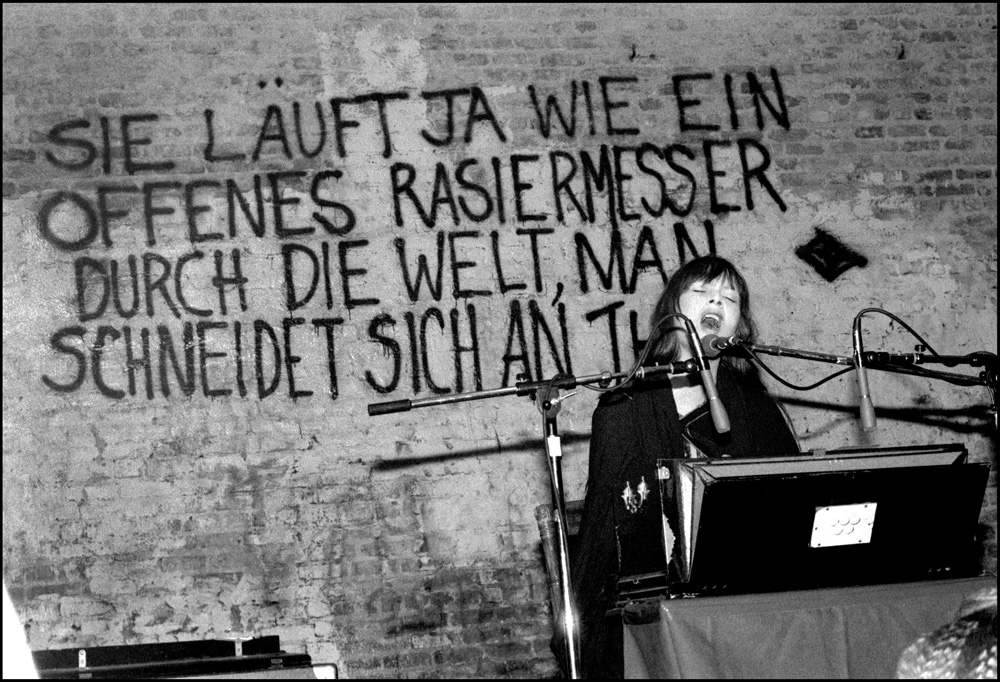
Nico at the Mabuhay Gardens, 1979.
“This is from one of Nico’s solo shows at the Mabuhay. She had a harmonium — you squeeze it back and forth, or maybe it had a pedal. It works by air blowing through some pipes or keys, I’m not even sure. Her little thing written behind her on the wall says, “She runs through the world like an open razor blade, watch out or you might get cut.” Yeah, she was pretty hardcore. The Velvet Underground was an incredible band. She was an incredible singer, but she sort of went a little downhill. She had drug problem, so she was super intense, but she did an incredible show. Very dark, very haunting, very deep kind of sound.”
———
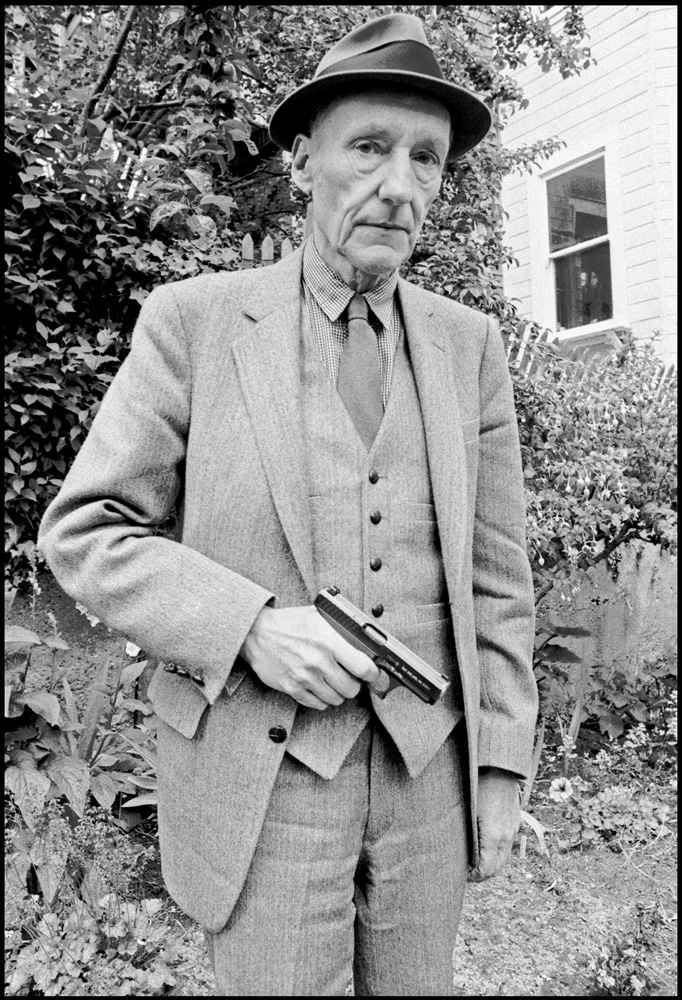
William Burroughs, 1982.
“Burroughs would probably be about 100-years-old now, if he hadn’t passed away. We were going to publish some interviews with him and also some written pieces that hadn’t been published before in our magazine RE/Search. After Vale interviewed him, we came out in the yard and brought out the guns. I had him pose in the garden. I liked the contrast between the garden and the guns, but I was nervous as all heck because I had so much respect for him. The thing with film, there’s always a chance you can make a mistake. I only had 10 minutes to photograph him, so I wanted to make sure the pictures came out. That is one picture that a lot of people like a lot. Even Timothy Leary, from the “turn on, tune in, drop out” era of the 1960’s, said that was his favorite photo of Burroughs. I always liked hearing that. He was very dignified but was also a rebel. He was a heroin addict. He accidentally shot his wife in Mexico and killed her. But everybody that was there said that it was an accident, and they were playing some kind of Russian Roulette game, which was stupid. The kind of thing people do when they’re drinking too much and doing drugs and they’re in a foreign country. That kind of changed his life a lot. I think it freaked him out quite a bit, even though people try to put him down for it. Of course, it is a terrible thing, but I don’t think he was really meaning to kill his wife. I think he became gay after that, or maybe he always was gay, I don’t know.”

